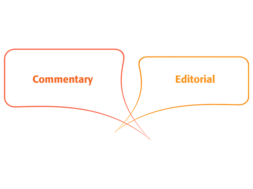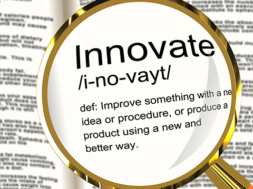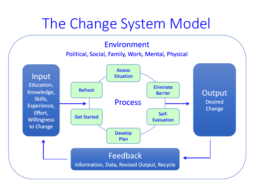
A Time For Change
By Guy Bell, Independent Higher Ed Consultant
I keep thinking of the book “The Rise and Fall of Great Powers,” written by Paul Kennedy as I consider how to frame the potential of this moment in time. Our sector is experiencing a shifting of the guards as traditional universities are becoming market-driven thought leaders.
In what has arguably been 10 years of destruction, there remains a fight to protect a system that simply doesn’t work. This is all playing out in a battle for the future of education.
In this chaos is opportunity! Can you see it?
Getting ahead of the market for most investors is too risky. Being market makers in the higher education sector is even riskier. Given the regulatory and political climate, what is the best approach to invest in meeting the clear market demand?
Staying within the lines
The obvious choice for existing and new investors is to buy opportunities and grow organically. This would be a “meet the market” solution and satisfy the need for relative certainty. Staying with this rational line of thinking for a moment would suggest mapping the past decade of closures in green and existing schools in red. From here, the strategy could target all the large markets and score based on size, competition, job demand, and potential for regional growth.
Another angle might be to target mid-size markets to avoid the “gold rush” of refilling large markets. This approach might lead to less competition for the first few years as many investors will, for good reason, target the major markets.
Getting to a clear strategic direction in terms of program mix may also drive the market decision. One example is making a pure play system focused on healthcare. This will further narrow down the targeted markets for acquisition or organic growth. Other strong programs such as truck driving will certainly narrow the focus. Perhaps rebuilding colleges with IT, healthcare, business and trades seems like the right approach. In this model, smaller markets can also be smart investments.
Some innovation
Taking the approach of refilling markets is one reasonable option. Since EdTech has continued to innovate and grow during this down cycle in the sector, adding a blended learning solution might be a way to meet the market interest and to lease less space.
Another approach may be to grow through brick and mortar investments and then test a new model. One of my old bosses used to say to me in response to one of my many less conventional ideas, “just don’t bet the farm.” There are many proven approaches. Some of them have worked better than others.
Our sector has purchased and created cash programs to offset 90/10. Investors could look to this as another revenue stream and expand into more innovative approaches around short term cash offerings.
The challenge with “kind of” innovating is that it limits meeting the full potential of any new idea. Unfortunately, given the regulatory environment and lack of a full-throated invitation to test new models, innovation will require full political and regulatory engagement or a decision to work outside of Title IV and possibly accreditation. Perhaps both.
Blazing a path into the future
“You never change things by fighting the existing reality. To change something, build a new model that makes the existing model obsolete.” – Buckminster Fuller
The unfortunate truth is that we need the system to break enough where everyone feels the pain. Too few of us and the systems we’ve designed are wired to be in a continuous state of improvement. Unfortunately, some of the most challenging barriers to overcome have nothing to do with markets, investors, or learning. They have to do with seeing the problem and solving it.
Tim Spurlock and Chris Ellis are two innovators who saw the problem and created a new solution. They founded the American Diesel Training Centers (https://www.americandieseltraining.com/) in the spring of 2017. They have managed to quickly become one of the leading providers of qualified mechanics in the five-state area around Ohio.
Why are they successful? Their program is 20 percent of the average cost and 20 percent of the average time to completion. In 12 weeks, students graduate with 100 percent placement. They’ve developed a second track working with specific companies. They solved for the problem rather than trying to figure out how to fit into the system.
Tim wrote a wonderful article that describes how he came to this point where he knew something had to be done. He shares the data that ultimately drove him to action. To learn more about their approach, read the attached article Tim wrote on his (https://www.linkedin.com/pulse/diesel-mechanic-shortage-get-much-worse-heres-how-we-solve-spurlock/).
There are others working on interesting solutions that are poised to lead our sector into the future. Some of the obvious market makers like Arizona State University, Grand Canyon University, and Purdue University are unquestionably blazing a trail into the future by embracing lower cost-higher quality and increased access without losing the best of traditional university offerings. Other approaches have been in and out of the news with less fanfare.
Galvanize, a coworking space with boot camps and online, food and drink, startups and fractional workers (https://www.galvanize.com/), has pointed to this future of blurring the lines between work and college. The ever-evolving MOOC story continues to pivot as EdX (https://www.edx.org/), and Coursera (https://www.coursera.org/) learn from their experience and continue to iteratively improve and expand the potential. Smartly, a newer online business school (https://smart.ly/the-executive-mba), has leveraged the knowledge of scaling Rosetta Stone to build a model for online education. They have designed an elegantly simple and smart system that is opening up the market to a low cost – high-quality experience.
Some might define innovation today as micro degrees and boot camps. Both are certainly welcome additions.
Portable stackable credentialing has been on the list of important steps to create a badge protocol that is universally accepted. To effectively create an education ecosystem capable of keeping up with the rapid changes in relevant learning, “credit” needs to be universally applied.
In general, adopting AI, machine learning, and all the fantastic EdTech solutions to improve online and blended learning will continue to accelerate changing how we work and learn. These technologies are changing and will continue to change the time it takes to master a subject and meet market demand for proven skills within or outside of the degree.
Last thought
Can you see what I see? Can you see that there are endless limitations within the systems as it is? And there are unknown risks ahead filled with opportunity.
Clayton Christensen has predicted that 50 percent of colleges and universities in the U.S. will be bankrupt in 10 to 15 years (https://www.cnbc.com/2017/11/15/hbs-professor-half-of-us-colleges-will-be-bankrupt-in-10-to-15-years.html). If the past predicts the future, industries rise and fall in great part because they resist change. By the time it’s obvious, it’s often too late.
GUY BELL is a consultant working with companies going through significant change.
He works with the executive team to create and support new strategies, business alignment, and performance management. To include:
o Complete review of business systems and recommendations to align process
o Complete review of people systems and recommendations to improve performance
o Turnaround advisor, partner, or leader to correct acute problems and then get to the core issue (interim CEO option)
Contact Information: Guy Bell // Industry Executive, Speaker, Consultant // Guy Pierce Bell // 913-309-7186 // guypiercebell1@gmail.com // guypiercebell.com // https://www.linkedin.com/in/guy-bell-0682644/ // https://twitter.com/gpbell








